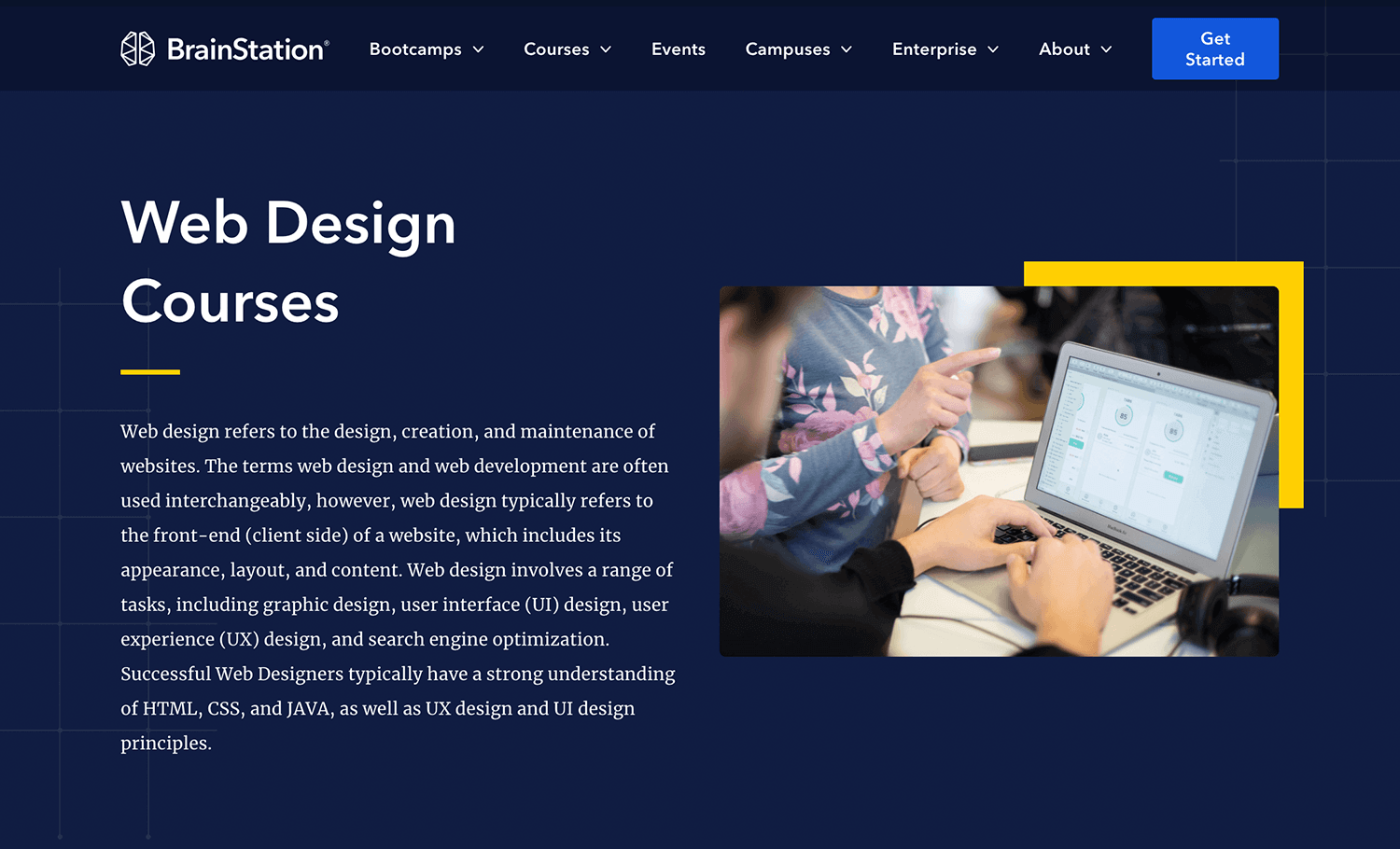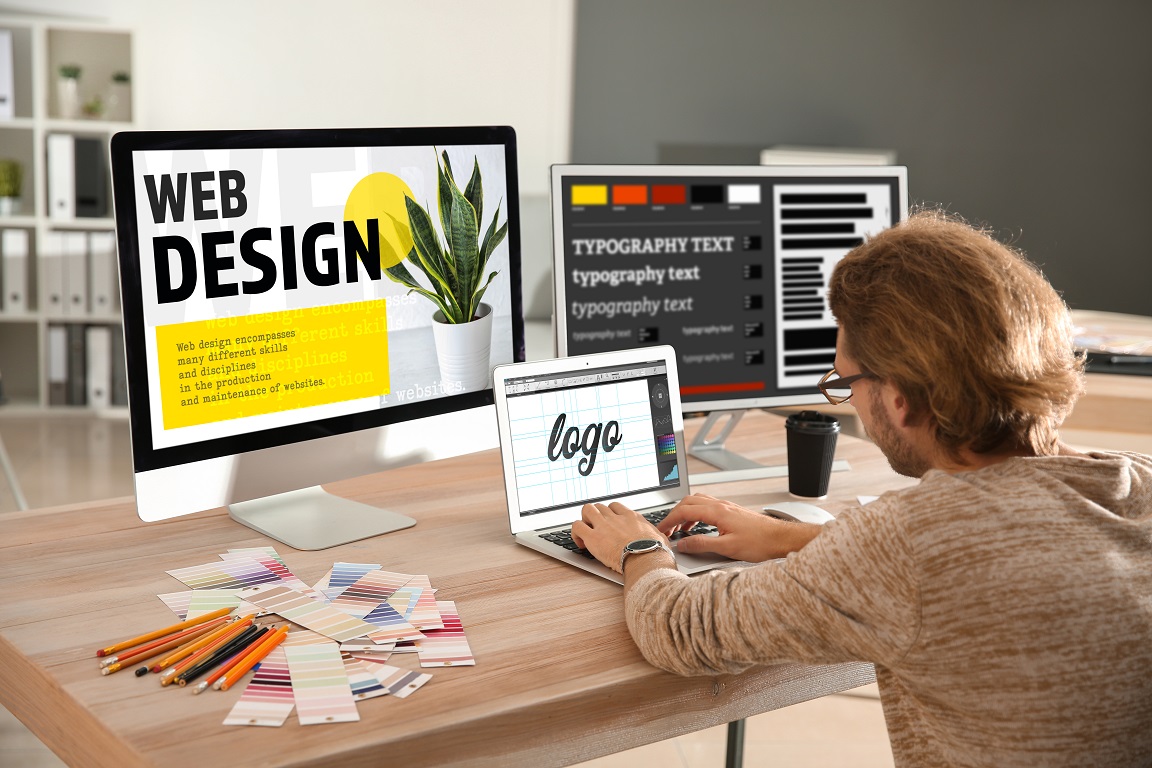The Most Effective Kinds of Web Style to Enhance Individual Experience and Involvement
In the ever-evolving landscape of digital interaction, the performance of Web layout considerably impacts customer experience and involvement. Numerous style techniques, such as minimal, responsive, and interactive formats, each deal special benefits that can provide to varied customer requirements.
Minimalist Web Layout
As electronic landscapes come to be increasingly cluttered, minimalist website design has actually become a powerful technique to improving user experience. This design viewpoint prioritizes simpleness, concentrating on vital elements while eliminating unnecessary disturbances. By using enough white area, straightforward navigation, and a restricted shade palette, minimal style fosters clearness and guides customer attention to crucial web content.
The core concept of minimal website design is to develop a seamless interaction for users. By reducing cognitive lots, individuals can quickly realize information without feeling overwhelmed. This direct technique not just improves usability yet also motivates engagement, as visitors are more likely to explore a website that is aesthetically attractive and very easy to navigate.
Additionally, minimal layout often emphasizes typography and images, utilizing these elements tactically to communicate messages efficiently. This concentrate on crucial components can enhance brand identity and produce a memorable user experience. Essentially, minimal website design is not just a fad; it is a thoughtful methodology that recognizes the importance of user-centered style. By removing nonessential elements, developers can produce a more engaging, reliable, and delightful Web experience for all customers.
Receptive Web Layout
In today's diverse electronic environment, responsive Web style has become important for developing a seamless individual experience throughout a plethora of gadgets. As customers access websites on mobile phones, desktop computers, tablet computers, and laptops, the capacity of a web site to adapt its design and material to different screen dimensions and resolutions is crucial.
Receptive Web layout uses flexible grids, images, and CSS media inquiries to guarantee that Web material exists optimally, no matter the gadget made use of. This approach not only improves the visual allure of an internet site but also dramatically enhances usability. Customers are much more most likely to involve with a website that uses a constant experience, as it removes the irritation of having to zoom in or scroll excessively.
In addition, internet search engine, consisting of Google, focus on mobile-friendly sites in search positions. By embracing responsive layout, businesses can boost their visibility and get to a more comprehensive audience. This technique additionally simplifies web site maintenance, as a solitary version of the site can provide to all tools, reducing the requirement for several variations. In summary, responsive Web design is a fundamental practice that improves user experience, engagement, and overall complete satisfaction.
Interactive Web Design
Receptive website design prepares for enhancing individual experience, but interactive Web style takes this a step even more by engaging customers in a much more vibrant way - Aligned Position Web Design. By integrating aspects such as animations, clickable prototypes, and real-time responses, interactive Web layout astounds individuals, attracting them into a richer browsing experience
This strategy not only fosters interaction however likewise motivates individuals to discover content proactively instead than passively eating it. Strategies such as gamification, where individuals gain incentives for finishing jobs, can significantly enhance the moment invested in a website and boost total satisfaction. Interactive attributes can streamline complicated info, making it much more pleasurable and digestible.

Including interactive style components can also cause greater conversion rates, as individuals are more probable to engage with a website that proactively involves them. Aligned Position Web Design. Eventually, interactive Web style changes user experiences right into remarkable trips, guaranteeing that site visitors return time and once again
Flat Style
Identified by its minimalistic strategy, level style emphasizes simplicity and functionality, stripping away unnecessary aspects and concentrating on necessary functions. This style ideology focuses on use, making certain that customers can browse user interfaces easily and performance. By using a clean aesthetic, flat style eliminates the mess typically found in much more ornate styles, thereby boosting customer emphasis on web content and capability.
The characteristic of level style lies in its use of strong shades, straightforward typography, and geometric forms. These aspects add to an aesthetically enticing interface that is both approachable and modern. In addition, level style cultivates a feeling of clearness, allowing customers to determine necessary actions and information without interruption.
In addition, level style is especially effective in receptive Web layout, as its simpleness equates well throughout various gadgets and display dimensions. By focusing on necessary functions, flat layout not only meets individual demands but also urges seamless interaction, making it a crucial part of reliable Web design approaches.
Adaptive Web Style
Flexible Web layout tailors the user experience by producing several dealt with formats customized to different screen sizes and gadgets. Unlike responsive style, which fluidly changes a solitary design, flexible style uses distinctive formats for specific breakpoints, guaranteeing optimal presentation on moved here various systems. This strategy permits developers to concentrate on the unique characteristics of each gadget, improving functionality by providing exactly what customers need based on their context.
One of the key benefits of flexible website design is its ability to optimize load times and efficiency. By offering customized material and images that fit the user's device, websites can minimize information use and enhance loading speeds. This is particularly beneficial for users with slower links or restricted data strategies.

In addition, adaptive layout helps with an extra controlled and constant branding experience. Given that Discover More designers produce numerous layouts, they can guarantee that the aesthetic elements line up with the brand name's identification across different systems - Aligned Position Web Design. This causes a natural individual experience, enhancing involvement and promoting individual retention
Final Thought
In conclusion, the integration of minimalist, responsive, and interactive Web style concepts dramatically boosts user experience and involvement. Minimalist style promotes clearness and emphasis, while receptive layout guarantees flexibility across numerous tools, advertising accessibility. Interactive design captivates users with vibrant aspects, motivating expedition and customization. Jointly, these style comes close to add to the production of straightforward settings that not just boost contentment yet additionally drive greater conversion prices, emphasizing their essential relevance in modern website design methods.

Minimal design fosters quality and focus, while responsive design guarantees versatility throughout numerous tools, promoting accessibility. Collectively, these design approaches contribute to the creation of user-friendly environments that not only improve fulfillment however likewise drive higher conversion rates, underscoring their vital value in contemporary Web layout approaches.